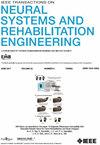A Deep-Learning Empowered, Real-Time Processing Platform of fNIRS/DOT for Brain Computer Interfaces and Neurofeedback
IF 4.8
2区 医学
Q2 ENGINEERING, BIOMEDICAL
IEEE Transactions on Neural Systems and Rehabilitation Engineering
Pub Date : 2025-03-21
DOI:10.1109/TNSRE.2025.3553794
引用次数: 0
Abstract
Brain-Computer Interfaces (BCI) and Neurofeedback (NFB) approaches, which both rely on real-time monitoring of brain activity, are increasingly being applied in rehabilitation, assistive technology, neurological diseases and behavioral disorders. Functional near-infrared spectroscopy (fNIRS) and diffuse optical tomography (DOT) are promising techniques for these applications due to their non-invasiveness, portability, low cost, and relatively high spatial resolution. However, real-time processing of fNIRS/DOT data remains a significant challenge as it requires establishing a baseline of the measurement, simultaneously performing real-time motion artifact (MA) correction across all channels, and (in the case of DOT) addressing the time-consuming process of image reconstruction. This study proposes a real-time processing system for fNIRS/DOT that integrates baseline calibration, denoising autoencoder (DAE) based MA correction model with a sliding window strategy, and a pre-calculated inverse Jacobian matrix to streamline the reconstructed 3D brain hemodynamics. The DAE model was trained on an extensive whole-head high-density DOT (HD-DOT) dataset and tested on separate motor imagery dataset augmented with artificial MA. The system demonstrated the capability to simultaneously process approximately 750 channels in real-time. Our results show that the DAE-based MA correction method outperformed traditional MA correction in terms of mean squared error and correlation to the known MA-free data while maintaining low latency, which is critical for effective BCI and NFB applications. The system’s high-channel, real-time processing capability provides channel-wise oxygenation information and functional 3D imaging, making it well-suited for fNIRS/DOT applications in BCI and NFB, particularly in movement-intensive scenarios such as motor rehabilitation and assistive technology for mobility support.脑机接口和神经反馈的fNIRS/DOT深度学习实时处理平台。
脑机接口(BCI)和神经反馈(NFB)方法都依赖于对大脑活动的实时监测,越来越多地应用于康复、辅助技术、神经系统疾病和行为障碍。功能近红外光谱(fNIRS)和漫射光学层析成像(DOT)由于其非侵入性、便携性、低成本和相对较高的空间分辨率,在这些应用中具有很好的前景。然而,fNIRS/DOT数据的实时处理仍然是一个重大挑战,因为它需要建立测量基线,同时在所有通道上执行实时运动伪影(MA)校正,并且(在DOT的情况下)解决耗时的图像重建过程。本研究提出了一种fNIRS/DOT实时处理系统,该系统集成了基线校准、基于滑动窗口策略的去噪自编码器(DAE) MA校正模型和预计算的逆雅比矩阵,以简化重建的3D脑血流动力学。DAE模型在广泛的全头部高密度DOT (HD-DOT)数据集上进行训练,并在人工MA增强的单独运动图像数据集上进行测试。该系统演示了同时实时处理大约750个信道的能力。我们的研究结果表明,基于dae的MA校正方法在均方误差和与已知无MA数据的相关性方面优于传统的MA校正方法,同时保持低延迟,这对于有效的BCI和NFB应用至关重要。该系统的高通道、实时处理能力提供通道氧合信息和功能性3D成像,使其非常适合BCI和NFB中的fNIRS/DOT应用,特别是在运动密集型场景中,如运动康复和辅助移动支持技术。
本文章由计算机程序翻译,如有差异,请以英文原文为准。
求助全文
约1分钟内获得全文
求助全文
来源期刊
CiteScore
8.60
自引率
8.20%
发文量
479
审稿时长
6-12 weeks
期刊介绍:
Rehabilitative and neural aspects of biomedical engineering, including functional electrical stimulation, acoustic dynamics, human performance measurement and analysis, nerve stimulation, electromyography, motor control and stimulation; and hardware and software applications for rehabilitation engineering and assistive devices.

 求助内容:
求助内容: 应助结果提醒方式:
应助结果提醒方式:


